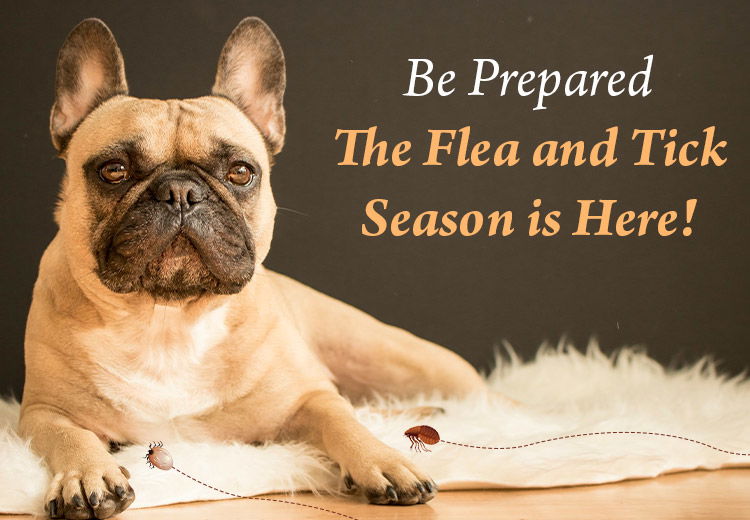 Apr 26, 2023
Apr 26, 2023

Everyone is getting excited, after months of snow and cold conditions all we want is to bask in the warmth of the sun. People are planning picnics and going out for hikes, and this is the perfect opportunity for the fleas and ticks to get latched onto your unfortunate furry friend.
Spring and summer are the perfect time for fleas and ticks. They thrive in warm temperatures and hide under the bush, waiting for your furry canine to latch onto them. How can we as pet parents stop these parasites from harming our pets and why are they so dangerous?
Here's everything you need to know about the flea and tick season, how these parasites cause damage, and how to prevent it from affecting your pet.
Fleas and ticks are the most common external parasites that cause discomfort to our furry friends. These bloodsucking pests can cause many ailments in our pets, here are some listed below:
Other than these symptoms, fleas and ticks are the biggest cause of worm infection in pets. To avoid any health problems caused by fleas and ticks the smartest move is to take preventive measures.
Though fleas and ticks are the biggest concerns of pet parents, they can easily be eradicated from our pets’ lives by using certain preventive measures. Here is a compiled list of some actions to keep the bloodsucking pests away.
Make your house less welcoming for fleas and tick by keeping it clean. Trimming the bushes and removing the leaf piles in your backyard will discourage parasite infestation around your house. Keep your garbage bins tightly shut and the area around it, clean. Avoid building a bird feeding station near the house.
Fleas and ticks are worse during warm weather. However, the risk of an infestation is present around the year. So, it is important to give your pet preventives and treatments that keep them safe. Following are different types of flea and tick treatments that you can use according to your convenience.
Flea and tick collar is the easiest way to keep a fussy pet safe from parasites. The collars contain certain active ingredients which slow-releases on dog's skin and maintain its efficacy for a long time. The Seresto Flea Collar lasts for up to 8 months.
Chewable when ingested by your pet, its active ingredients spread throughout the body and affect the fleas or ticks once they bite them. Your pet can have long-term protection using Bravecto, Nexgard Spectra, or Simparica Trio. These are effective in killing fleas and ticks before they lay eggs and preventing future infestations.
Unlike the chewable, topical are generally applied between your pet's shoulder blades. Once applied the solution gets distributed along with the body's natural oils and spread throughout the body of the pet. Bravecto, Frontline Plus, Stronghold Plus for Cats, or Revolution are some of the most effective treatments available, which are waterproof once dried. The parasites do not have to bite your pet to be eliminated.
The spray treats and controls fleas on your pet. Once you spray the solution, like the Frontline Spray, it keeps your pet protected for a month and works quickly to eliminate existing fleas.
*Do not use flea and tick preventives meant for dogs on cats and vice versa. Consult your veterinarian in case of doubt and carefully read the product package before administering any preventive treatment to your pet.
Grooming is as important as using preventive treatments on pets. It keeps them clean, and fresh and helps in preventing infestations. There are certain flea and tick shampoos, which aid in treating and controlling infections. Following is the list of some common spots on your pet where these parasites can hide:
External parasites love dark, humid and warm places. They wait in bushes, leaf piles, wood piles and crawl spaces to jump onto their next prey. Once inside your home, they can fester onto the carpets, bedding, furniture, and other dark places. To prevent the infestation you should keep your house clean and ventilated. There should be some hours of the day when sunlight should shine into your house, this will rid off the fleas that have made their way into your house.
Bottom Line
These small little buggers cause big problems and it is practically impossible to prevent their exposure to our pets, the best course of action is to prevent them. The flea and tick season is just around the corner, so it would be a smart move on your end to stock up on the preventives and keep your pet protected. So, they can have a paw-some time.